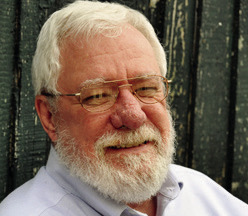Good habits and a lot of gold served Lastie well
When Lastie Dupre died at his home on Prairie Plaisance in 1886 at the age of 91 his obituary said he was “known far and wide as the wealthiest stock raiser in the Attakapas region” and a man “whose hospitality was commensurate with the large means at his disposal.”
He lived out on the prairie in a simple, nondescript home that was comfortable but far from ostentatious. It was the little brick building next to it that provided proof of both his wealth and his hospitality. It housed an iron vault that was supposed to be full of gold.
Lastie was born March 20, 1795, and died August 15, 1886. His father was Jacques Dupré, the 8th governor of Louisiana, and his mother was Théotiste Roy. She was the second child of Joseph Noel Roy and Nanette Anne Bordelon and had 12 sisters and 11 brothers. Lastie married Marie Tonton Berard in 1819, and they had only seven children. She was the daughter of Jean-Baptiste Berard and Marie Marguerite DeCoux.

According to his obituary, Lastie’s “simple and regular habits, joined with an active, energetic life, gave him extraordinary health and strength, which prolonged his life far beyond the limits usually allotted to man.”
The little vault that he built in the early 1800s is believed to be the first bank building in St. Landry Parish. He kept his riches there and let his friends use it to store their money. The walls on the little building, which still stands, are fifteen to eighteen inches thick. A heavy iron door and a single barred and shuttered window were the only ways in or out when Lastie built it. The roof was made of slate laid atop thick cypress planks. The iron vault inside the building was chained to heavy bolts screwed into the thick walls.
He apparently acquired enough money early in life to justify the safe. Some accounts say, perhaps with only a little exaggeration, that at one time he owned all the land that is now Allen Parish, and that was only part of his real estate.
According to the old tales, he first built just the brick building and added the iron vault later. At first, he supposedly buried his gold in layers in the dirt floor. Legend has it that he had so much gold buried there that it took a week to dig it up, wash it, and count it when it was time to transfer it to his new vault. The legend doesn’t say how many hours were devoted each day to the digging. We can assume that he dug slowly and carefully enough to get it all, and that there was a lot of gold involved, however thorough his excavations, Outlaws tried to force their way into the little building on at least one occasion, but to no avail. They beat on the door, shot at the locks, used horses to pull on the doors and the window bars, and tried a few other things, but Lastie’s money stayed safe.
But, while he guarded his fortune against thieves, he is said to have had complete faith in the honesty of his neighbors. He was so honest himself, people said, that it never occurred to him that anyone else could be dishonest. Or, some say, he was so rich that it didn’t matter if someone took a little bit of his gold. At any rate, as the story goes, when his planter friends came by to get their gold from his vault, he just gave them the key and told them to take what was theirs.
That neighborly attitude is probably why “an immense throng of relatives and friends met to pay their last respects to the esteemed and honored old gentleman” when he was buried in the Catholic cemetery in Opelousas.
You can contact Jim Bradshaw at jimbradshaw4321@ gmail.com or P.O. Box 1121, Washington LA 70589.

